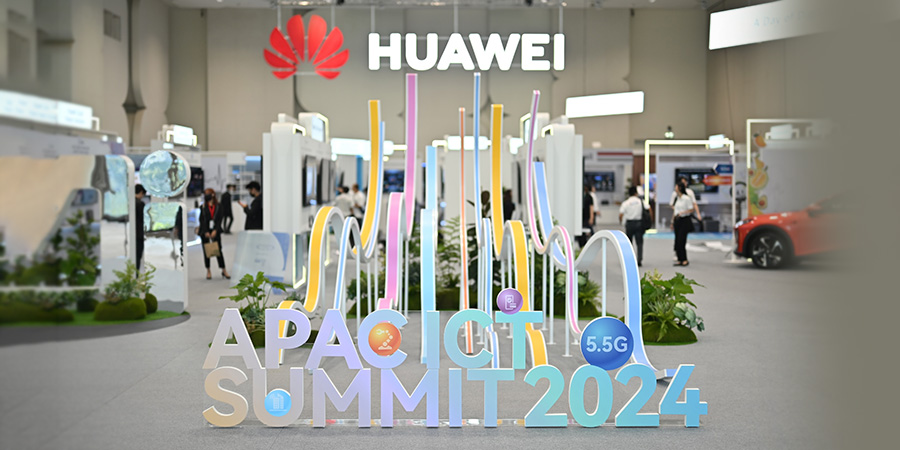The digital economy is expanding rapidly globally, and the Asia Pacific and the Middle East regions are no exception. The demand for digital services and solutions are palpable across private and public sectors.
The UN Digital Economy Report 2024 noted that annual smartphone shipments have more than doubled since 2010, hitting 1.2 billion in 2023. It added that Internet of Things (IoT) devices are projected to surge 2.5 times from 2023 to 39 billion by 2029. Moreover, new data from 43 countries, representing about three quarters of global GDP, indicated that business e-commerce sales grew nearly 60% from 2016 to 2022, to reach USD 27 trillion.
This kind of growth contributes to the economic health of a country, especially in Asia-Pacific regions where there is a digital transformation lag of 5 to 10 years compared to developed economies such as China. However, digital transformation comes with its own set of challenges such as sustainability, energy efficiency and electronic waste management and so on. Addressing these issues warrants technological innovations, policy reforms and collaboration from stakeholders in the ICT sector.
Thailand’s Digital Transformation
Thailand is on the verge of a digital transformation evolution. Thailand, along with Hong Kong, stands out as an early adopter of 5G, positioning itself well for this next phase of development. There is significant untapped economic potential waiting to be harnessed in Thailand. With the advent of 5.5G—the advanced phase of 5G—Thailand is poised for an even more transformative digital landscape.
The global standardization of 5.5G, completed in early 2024, marks a major milestone in telecommunications. This technology introduces key enhancements related to 5G, including:
- Ultra-Broadband: 5.5G delivers download speeds of up to 10 Gbps (ten times faster than 5G) and upload speeds of at least 500 Mbps, ensuring a seamless, ultra-fast user experience.
- Deterministic SLA: With end-to-end latency as low as 1ms, 5.5G guarantees service quality, essential for real-time applications and services.
- AI (Artificial Intelligence) and Autonomous Networks: AI integration enables smarter operations and maintenance (O&M), optimized network performance, and precise marketing tools, allowing operators to manage larger networks more efficiently.
Adhering to the “5+1” Dividend
During the Asia-Pacific ICT Summit 2024, Huawei, in collaboration with the Ministry of Digital Economy and Society (MDES) and the GSMA, outlined its strategy to lead Thailand into the 5.5G era, highlighting the booming digital economy across the Asia Pacific. This transformative strategy is driven by what Huawei describes as the “5+1” dividend, which not only transforms daily life but also fuels broader social development.
Huawei has identified 5.5G as a critical step needed to pursue future industry growth. The digital transformation and innovation found in industries such as smart manufacturing, smart healthcare, smart government and public services, smart finance and smart retail will be vital for Thailand’s economic stability. 5.5G will significantly boost capabilities in areas like autonomous logistics, product quality inspection, and intelligent operation centers. In fully connected factories, it will eliminate the need for complex pipelines in ordinary workshops, enabling automated machines to be interconnected, more accurate, and more efficient.
Furthermore, the rapid advancement of AI technologies, combined with traditional connections such as people, homes, devices, and vehicles, is driving the demand for higher uplink bandwidth and lower network latency. 5G-Advanced connectivity, which is expected to catalyze innovative digital solutions across sectors, is transforming traditional modes of communication and connectivity. The ultra-low latency, high bandwidth capacity of this technology accelerates the integration of emerging technologies such as artificial intelligence and cloud computing and improves telecom network flexibility, enabling more complex and varied use cases, ranging from smart cities to advanced industrial applications.
Huawei’s strategy for Thailand focuses on enhancing connectivity, with 5.5G offering transformative improvements such as:
- Ultra-Fast Networks: Download speeds up to 10 Gbps and upload speeds of at least 500 Mbps.
- Low Latency: End-to-end latency as low as 1 ms (crucial for real-time applications).
- AI-Driven Networks: Smarter network management and optimized performance through AI.
Strategic 5G-A-Centric Investments
Huawei has also demonstrated its commitment to Thailand’s digital future by partnering with Chulalongkorn University and investing in 5.5G innovation and talent development to position Thailand as a potential digital economy hub in Southeast Asia. These technical advancements are critical for paving the way for innovative services such as enhanced massive IoT applications, new interactive experiences (3D/MR/XR), V2X (Vehicle-to-Everything) communication, and AI-driven applications.
Speaking at the summit, Abel Deng, President of Carrier Sales Business of Huawei Asia Pacific, noted, “As we enter the 5.5G era, Huawei is more committed than ever to supporting Thailand’s digital transformation. 5.5G is not just about connectivity; but also represents a new ecosystem and new opportunities, which will generate greater social and economic benefits.
“2024 is the first year of 5G-A commercial use. Huawei will work with the Thailand government, operators, and partners to explore the evolution to the 5.5G era; build a ubiquitous network featuring ultimate experiences, efficient collaboration, green and low-carbon, and high stability and intelligence; and promote the in-depth development of data intelligence transformation. We aim to build a robust 5.5G ecosystem in Thailand, unlocking new opportunities and accelerating the nation's journey towards becoming a digital economy hub in Southeast Asia.”











